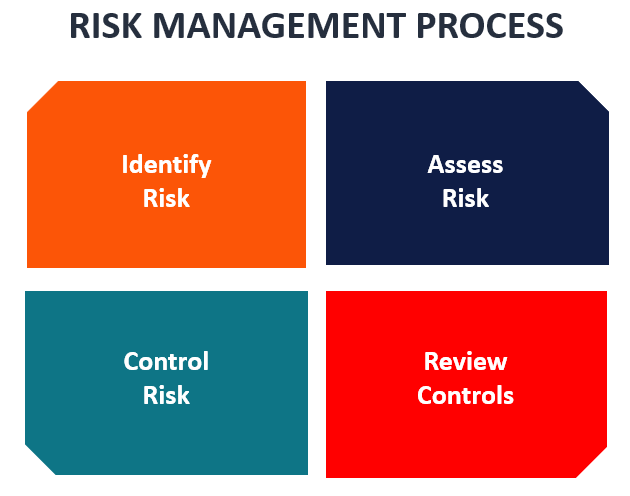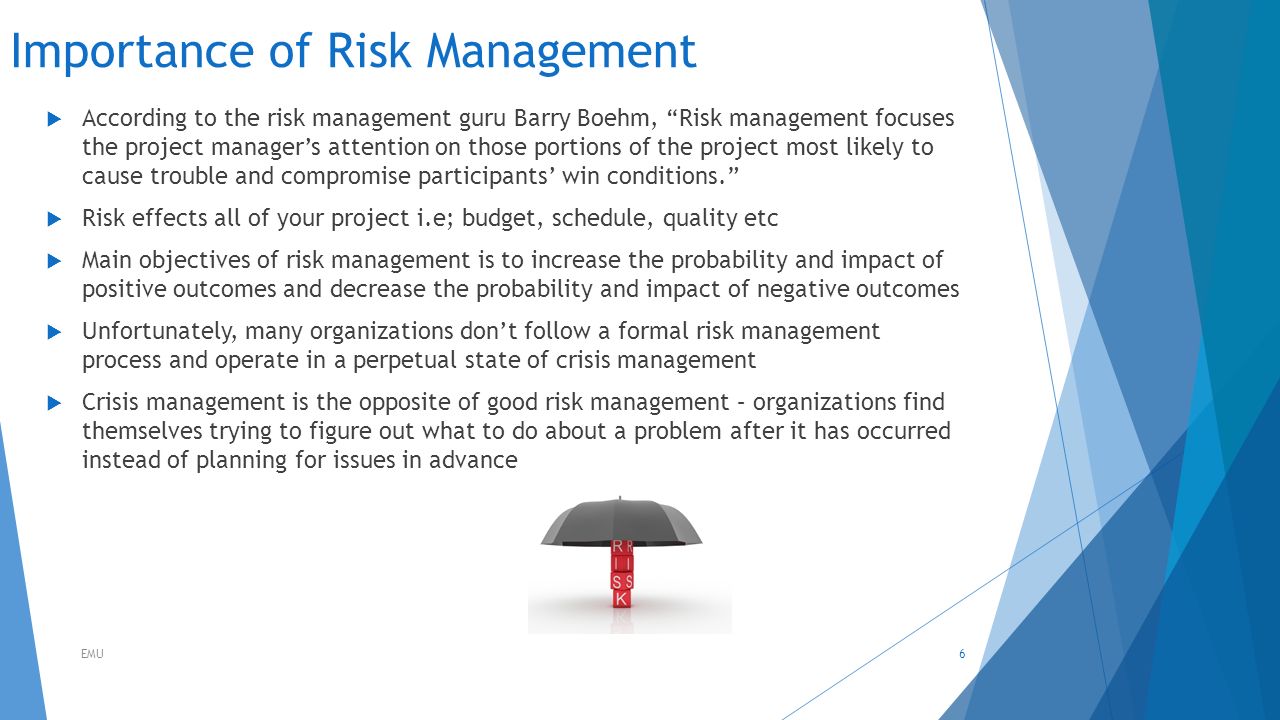A Thorough Guide to Understanding the Importance of Risk Management
A Thorough Guide to Understanding the Importance of Risk Management
Blog Article
Checking out the Importance of Risk Management for Effective Decision-Making Approaches
In the intricate world of company, Risk Management emerges as a crucial aspect in the decision-making procedure. The capacity to determine possible hazards and possibilities, and strategize appropriately, can mean the difference in between success and failure.
Comprehending the Principle of Risk Management
Risk Management, an important component in decision-making, is often misunderstood or oversimplified. Risk Management entails organized and self-displined strategies, making use of data and informative assessments. From economic unpredictabilities, lawful responsibilities, tactical Management mistakes, to mishaps and natural disasters, it resolves different dangers - importance of risk management.
The Role of Risk Management in Decision-Making Processes
In the world of tactical planning and service operations, Risk Management plays an important duty in decision-making procedures. It aids in identifying potential dangers and uncertainties that might influence the accomplishment of company purposes. By tracing these dangers, firms can create approaches to alleviate their influence, making sure business connection and stability. Risk Management hence becomes an essential tool in decision-making, helping leaders to make informed choices based on an extensive understanding of the threats included. It urges an aggressive technique, enabling organizations to prepare and anticipate for possible future circumstances. This dramatically lowers the chance of negative repercussions, promoting much more efficient and efficient decision-making techniques. Therefore, Risk Management works as an important component in the decision-making procedures of any kind of organization.

Just How Risk Management Enhances Strategic Planning
In the context of strategic planning, Risk Management plays a critical role. Launching with the recognition of potential threats, it additionally includes the execution of Risk reduction procedures. The function of Risk Management is not static but vibrant, as it demands constant surveillance and adjusting of methods.
Identifying Potential Threats

Implementing Risk Mitigation
Having actually established the significance of determining potential dangers, the next step is to explore Risk reduction. This process involves creating and applying techniques to take care of determined threats properly. It is a vital aspect of strategic planning as it improves decision-making by decreasing potential unfavorable end results. Risk mitigation techniques can range from Risk avoidance, Risk transfer, to risk decrease. Each approach needs to be tailored to the details Risk, considering its potential influence and the company's Risk resistance. Efficient Risk reduction needs a deep understanding of the Risk landscape and the possible influence of each Risk. This understanding makes it possible for companies to prioritize threats and allocate resources effectively, making sure that one of the most substantial hazards are addressed first.
Monitoring and Readjusting Strategies
Though Risk reduction is a critical step in calculated planning, constant surveillance and change of these strategies is just as important. It additionally offers an opportunity to evaluate the success of the Risk Management actions, allowing adjustments to be made where required, more improving strategic preparation. Surveillance and readjusting Risk Management techniques is a crucial component for boosting a Discover More company's durability and calculated planning.
Case Studies: Successful Risk Management and Decision-Making
In the globe of company and finance, successful Risk Management and decision-making commonly work as the pillars of flourishing business. One such entity is an international oil firm that alleviated economic loss by hedging against fluctuating oil rates. In one more circumstances, a tech startup thrived by identifying and approving risky, high-reward approaches in a volatile market. An international financial institution, encountered with regulative unpredictabilities, efficiently browsed the situation through proactive Risk evaluation and dynamic decision-making. These situations highlight the value of astute Risk Management in decision-making procedures. It is not the absence of Risk, but the Management of it, that usually separates effective firms from not successful ones. These cases emphasize the important function of Risk Management in tactical decision-making. importance of risk management.
Tools and Strategies for Effective Risk Management
These tools, such as Risk signs up and heat maps, aid in identifying and assessing prospective dangers. Risk reaction techniques, a vital element of Risk Management, involve approving, preventing, moving, or mitigating threats. With these techniques and tools, decision-makers can browse the complicated landscape of Risk Management, thereby assisting in informed and reliable decision-making.
Future Trends in Risk Management and Decision-Making Methods
As we check out the huge landscape of Risk Management, it ends up being obvious Web Site that the strategies and tools made use of today will certainly continue to evolve. Future trends direct in the direction of a raised reliance on technology, with fabricated knowledge and artificial intelligence playing substantial functions. These innovations will certainly allow companies to anticipate prospective dangers with better precision and make more informed choices. Furthermore, there will be an expanding focus on resilience, not simply in handling dangers but likewise in bouncing back from adverse situations. The principle of Risk society, where every participant of a company is aware and included in Risk Management, will certainly obtain a lot more importance. These patterns declare a more proactive and comprehensive approach in the direction of Risk Management and decision-making.
Verdict

Risk Management hence becomes an important device in decision-making, assisting leaders to make educated selections based on a thorough understanding of the risks included. Risk mitigation methods can vary from Risk evasion, Risk transfer, to run the risk of reduction (importance of risk management). Reliable Risk reduction calls for a deep understanding of the Risk landscape and the potential influence of each Risk. Risk response strategies, a crucial part of Risk Management, entail approving, staying clear of, moving, or mitigating dangers. The idea of Risk society, where every participant of an organization is conscious and entailed in Risk Management, will get extra prominence
Report this page